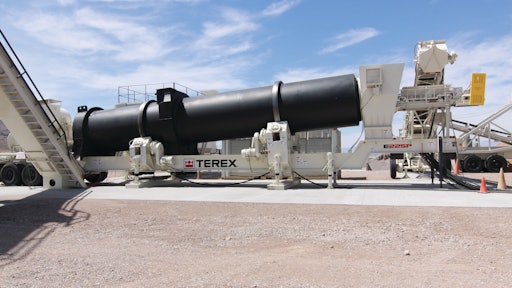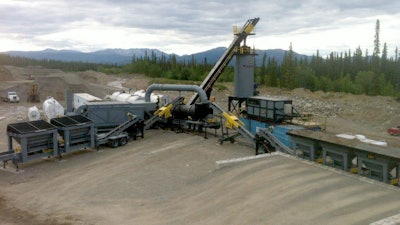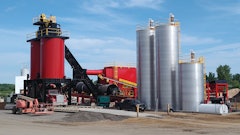
On August 9, 2023 the Environmental Protection Agency (EPA) released a proposed rule that will update the reporting requirements for emissions under the Air Emissions Reporting Requirements (AERR) for source points (which includes portable asphalt plants) regarding emissions of hazardous air pollutants (HAP). At the conclusion of the public comment period, which fully closes October 18, 2023, the agency may require major alterations to the current regulations of State and local agencies. A virtual public hearing will also be held this coming week, August 30, 2023.
The proposal is posted on Regulations.gov and is extremely long, and not every point or detail is covered in this article. You can download the full text of the proposed rule here.
What's Might Happen Under the New Rules
The possible changes are meant to expand the scope of information being collected, streamline the collection of that information, as well as increase the availability of that information to local communities, and to permit the EPA to regulate the air quality more acutely under the Clean Air Act. The proposal requires owners/operators of certain "point sources" to report information on HAP. Those impacted by the rule would be required to document and report HAP information using the Combined Air Emissions Reporting System (CAERS), which subsequently reports that data to the National Emissions Inventory (NEI) and the Toxic Release Inventory (TRI), as well as State programs too.
While it doesn't currently require States to adopt the use of CAERS, the EPA does recognize that it would help streamline the emission reporting efforts, avoiding duplication of effort, and reduce the burden on States to maintain their own emission collection systems.
In the preposed rule, it states, "EPA plans future enhancements to CAERS to share emissions data with the Greenhouse Gas (GHG) Reporting Program (GHGRP) and the Consolidated Emissions Data Reporting Interface (CEDRI).”
Under the EPA proposition, it would require the owner/operators of certain facilities to report annual actual emissions of HAP directly to the EPA for the NEI, and it includes an option for States to accept the reporting responsibility on behalf of those owner/operators within their State. Regardless of whether an owner/operator already reports emissions to the TRI program, under the new ruling, it would require additional sub-facility data needed for air quality modeling. Subsequently, this would permit the EPA to assess community impacts on a smaller, local scale, while creating solutions for those areas deemed "high risk." ADM_EX Portable Plant
ADM_EX Portable Plant
Portable Plants
As it concerns the NEI, this new rule would include a complete accounting of point sources that meet the emissions reporting threshold, as detailed in the tables 1A, 1B, 1C (too large to include in the article, but can be found here). As it stands right now, the AERR neglects to account for some atypical cases, most importantly for our industry, that includes portable facilities like asphalt plants. There are some States which do currently report on portable asphalt plants, sharing the information with the NEI, but not all sources are being reported from every State at this time. The new ruling would better define what constitutes a "portable facility" and ensure that those sources are hereafter reported to the NEI.
As such, EPA is proposing the following:
- Clarify that portable facilities should be considered when States determine which sources should be reported to meet point source requirements.
- Add a definition of portable facility to mean ‘‘a facility that does not have a fixed location such as an asphalt plant or portable land or sea-based drilling rig.’’
- Require an explanation to use county code ‘‘777’’ to reflect the lack of county specificity when such sources are moved among counties over time. Facilities reported in this manner would still need to be reported for their emissions within a State, but there would be an exception for the requirement of submitting facility air centroid coordinates or for release point coordinates for portable facilities.
- Portable facilities operating solely within Indian country where a tribe or State does not report CAP or HAP emissions data would be required to report emissions.
- Add a requirement that portable facilities operating across State and/or Indian country boundaries would report directly to the EPA any emissions not reported by those States and/or tribes.
- Allow owners/operators to optionally include the specific time periods during which they operated in each region with their emissions reports.
EPA is also recognizing in the proposed rule that portable sources, if stationary for long enough, could be an important local source. EPA is proposing an option that may be included in the final rule, that proposes two categories of portable facilities with different reporting requirements as follows:
- Facilities would be defined as “portable” and required to report as portable sources only for periods when the source remains within a 1-km radius for fewer than 30 days.
- Facilities would be defined as “stationary” and be required to report as a stationary point source when the facility operates within a 1-km radius for 30 days or more.
Reporting Thresholds for Portable Asphalt Plants
Point source means a stationary or portable facility that:
(1) is a major source under 40 CFR part 70 for any pollutant, or
(2) has PTE or annual actual emissions of pollutants greater than or equal to the reporting thresholds in Table 1A to Appendix A of this subpart, or
(3) has a primary NAICS code listed in Table 1C to Appendix A of this subpart and annual actual emissions of pollutants greater than or equal to the reporting HAP reporting thresholds (presented in Table 1B to Appendix A of this subpart).
For more information on everything discussed here, please visit: https://www.regulations.gov/document/EPA-HQ-OAR-2004-0489-0092
Special thanks to Jay Hansen, Vice President of Government Affairs,





























